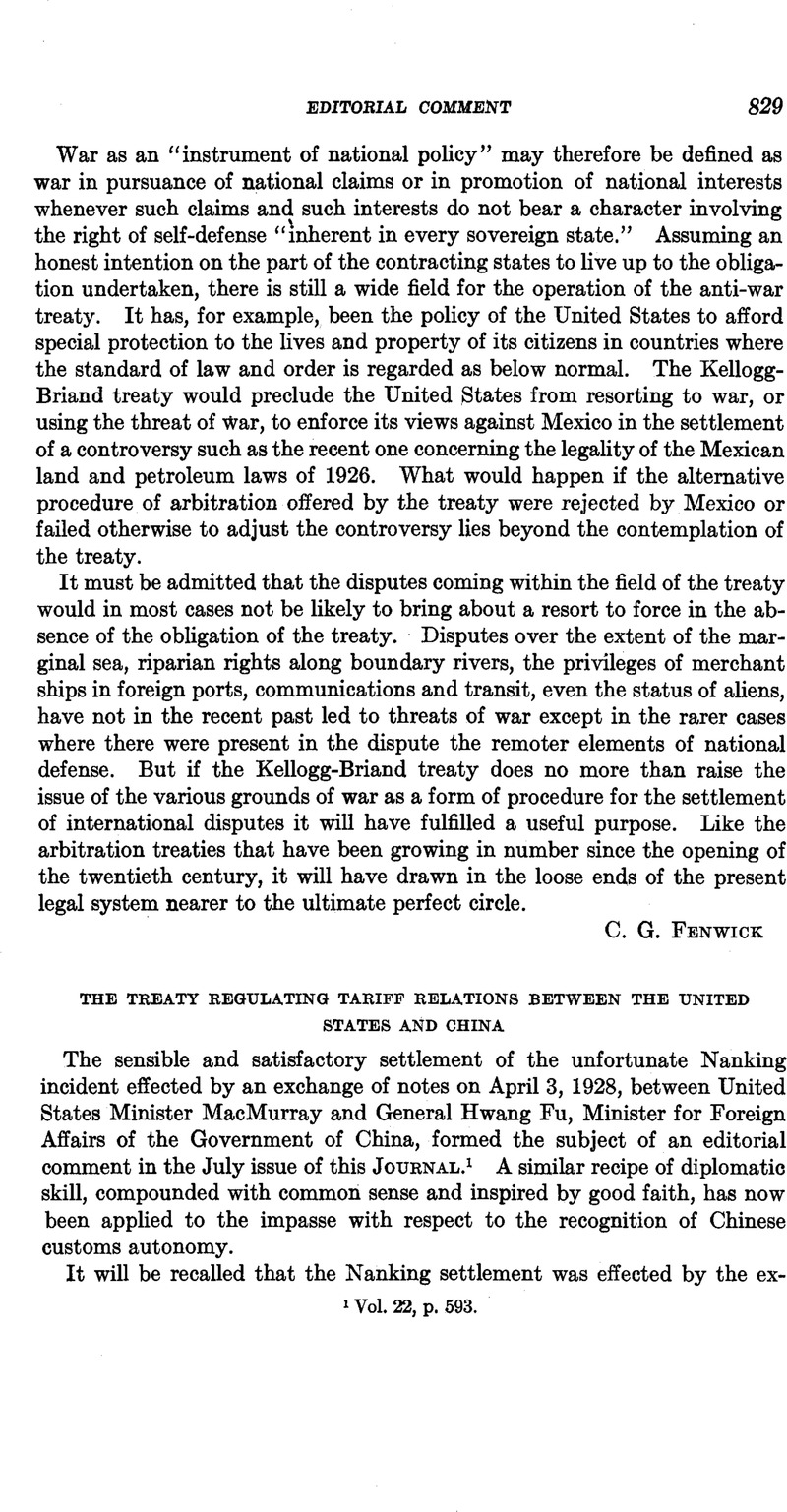No CrossRef data available.
Article contents
The Treaty Regulating Tariff Relations between the United States and China
Published online by Cambridge University Press: 04 May 2017
Abstract

- Type
- Editorial Comment
- Information
- Copyright
- Copyright © American Society of International Law 1928
References
1 Vol. 22, p. 593.
2 The text of these notes was made public by the Department of State in a press release on April 3, 1928. They are quoted substantially in full in the editorial comment in the July Journal, Vol. 22, pp. 593 et seq.
3 See statement by the Honorable Frank B. Kellogg, Secretary of State, released for publication on January 27, 1927, by the Department of State. (Italics supplied.)
4 Quoted in Satow's Guide to Diplomatic Practice, Vol. I, pp. 169-170.
5 See full text of the treaty printed in Supplement this J o u r n a l , page 170.
6 North China Standard of Peking, July 27, 1928.
7 Ibid., July 28, 1928.
8 Tokio Hochi, July 28, 1928
9 North China Standard of Peking, July 29, 1928
10 See Tokio Asahi, July 28 and 30, 1928; Tokio Jiji of the same date; the Osaka Asahi of July 29, 1928; Tokio Nichi-Nichi of July 29 and 30, 1928; Kobe Asahi of July 29, 1928. It is fair to add that some of the Japanese newspapers complimented the negotiators of the treaty, making their praise, however, a vehicle for criticism of the Japanese Ministry and its handling of the situation.
11 See Moore, International Law Digest, Vol. I, Sect. 27, p. 73. Hall, International Law, 4th ed., p. 87; 8th ed., p. 103. Oppenheim, International Law, 2nd ed., Sect. 71, pp. 117—118; United States Daily of September 29, 1928.
12 In this connection, it may be recalled that the United States went to Paris in 1919 without adequate information as regards the arrangements between Japan and several Allied Powers concluded in 1917 concerning the disposition of Germany's rights (or rather wrongs) in Shantung. (See MacMurray, China Treaties, II, pp. 1167-1168; U. S. Senate Committee on Foreign Relations, 66th Cong. 1st sess., Hearings on Versailles Treaty, pp. 147, 148, 215-219, 525, etc.)
13 See editorial in this Journal, Vol. 18 (1924), p. 781
14 “ Report of the Commission on Extraterritoriality in China,” published by the Department of State, p. 108. See this Journal, July 1927 (Vol. 21, No. 3), p. 58 at p. 64.
15 There are certain other technical questions which are suggested by a perusal of this treaty, such as its possible effect on the tariff policy of the United States and the question of the revision of the treaty in view of the absence of any express provision for revision, which do not fall within the scope of this editorial. See an editorial on “ Chinese Termination of Unequal Treaties,” this Journal, April, 1927 (Vol. 21), p. 289, and particularly a note of the Chinese Government to Belgium of April 16, 1926, therein quoted.
16 Viscount Palmerston, speaking in the Don Pacifico debate (Hansard, Parliamentary .Debates, 3rd Series, Vol. 112, page 387).


